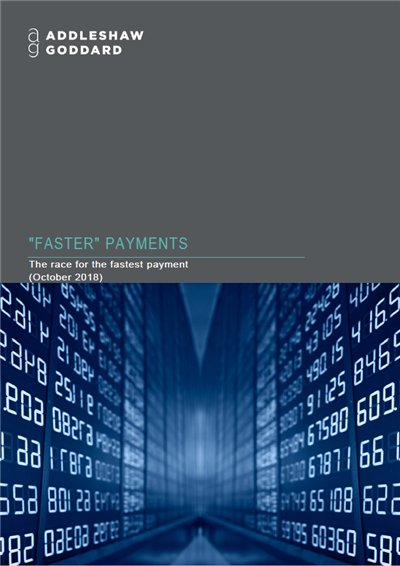The race for the fastest payment
Cryptocurrencies and related technologies continue to attract interest in the payments sector but regulators and central banks are no longer in the dark about Bitcoin and its offshoots. This article looks at the current situation, how regulation is catching up with the technology, and how to ensure that participants can continue to develop in a regulated environment.
The use of blockchain technologies and distributed ledger technologies has developed, particularly in the cross border payments space (in this article, references to DLT include both blockchain and distributed ledger technology). In the last year, FinTechs, banks, central banks (including the "old person" of Threadneedle Street), card networks and SWIFT have confirmed their interest in DLT, with various proof-of-concepts being tested.
In this article, we look at the commercial developments in this area and related regulatory and contractual issues which are increasingly being discussed as DLT propositions are brought to market, in particular:
- DLT
- What's disruptive?
- Innovations in DLT
- Using DLT to innovate in other markets
- In payments
- Points of interest
- Financial services regulation
- Consumer protection
- Anti-money laundering
- Smart contracts
- Data protection





